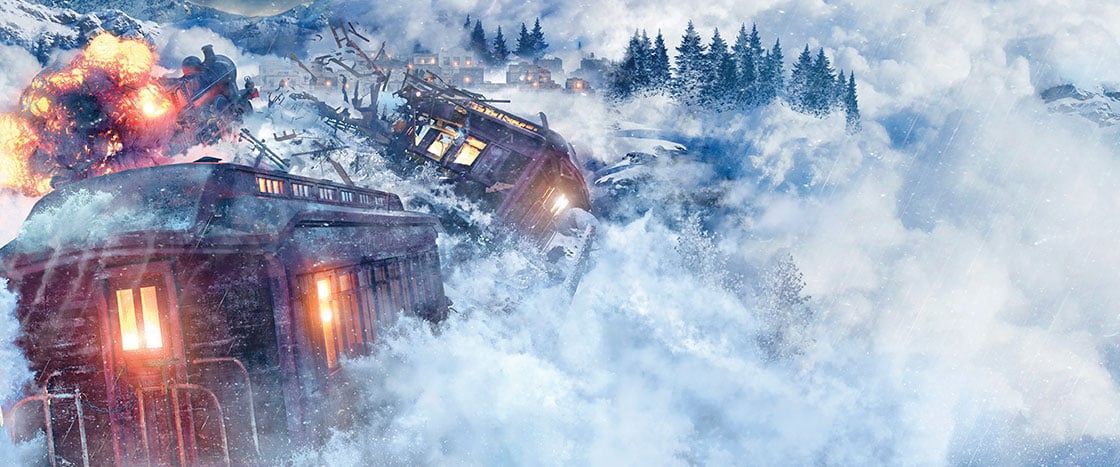Will we ever escape from this train?
That’s what 8-year-old Raymond Starrett must have been wondering on the night of February 28, 1910. For six days, Raymond, his mother, Ida, and dozens of others had been trapped on a train in the middle of Washington’s Cascade Mountains.
They’d been more than halfway through a 300-mile journey across the state of Washington when their train, the Seattle Express, was hit by a violent blizzard. Snow tumbled from the sky and blocked the tracks. Howling winds shook the train.
“We’ll be moving shortly!” the train conductor had promised.
But the blizzard raged on . . . and on and on. Hours turned to days.
As Raymond and the other passengers went to bed for their sixth frosty night, they were fighting panic. Food was running low. There was nothing to drink but melted snow. The car stank of clogged toilets and sweaty bodies.
When would this nightmare end?
In fact, the real nightmare was about to begin.
Just a few hours later, as Raymond and others slept, massive hunks of snow broke loose from the steep mountainside that loomed above the train. In the blink of an eye, the blanket of snow turned into a killer wave—a monstrous avalanche filled with snow, ice, rocks, and broken trees. It sped down the mountainside, destroying everything in its path.
And now this killer wave was heading straight for the train.
Will we ever escape from this train?
That’s what 8-year-old Raymond Starrett must have been wondering. It was the night of February 28, 1910. For six days, Raymond, his mother, Ida, and many others had been trapped on a train. They were in the middle of Washington’s Cascade Mountains.
Their trip across the state of Washington was almost done when their train, the Seattle Express, was hit by a strong blizzard. Snow fell from the sky and blocked the tracks. Roaring winds shook the train.
“We’ll be moving shortly!” the train driver had promised.
But the blizzard went on . . . and on and on. Hours turned to days.
As Raymond and the other passengers went to bed, they were fighting panic. Food was running low. There was nothing to drink but melted snow. The car stank of clogged toilets and sweaty bodies.
When would this nightmare end?
In fact, the real nightmare was about to begin.
Just a few hours later, huge pieces of snow broke loose from the steep mountainside. Suddenly, the blanket of snow turned into a killer wave. It was a giant avalanche filled with snow, ice, rocks, and broken trees. It sped down the mountainside, destroying everything in its path.
And now this killer wave was heading straight for the train.

